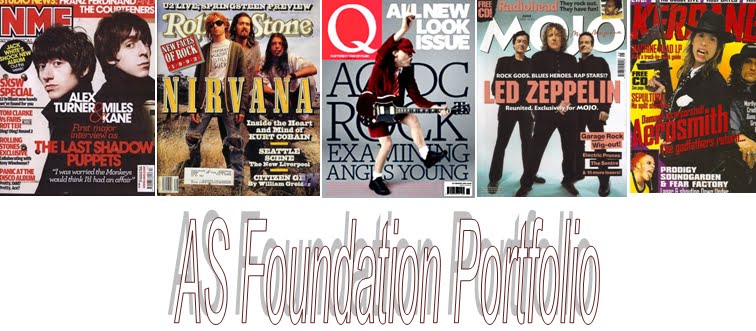 This cover of NME focuses on feminism in the media today. The main image of singer Beth Ditto represents everything which feminists stand for - women should not be subservient to men and are not passive agents in a male world.
This cover of NME focuses on feminism in the media today. The main image of singer Beth Ditto represents everything which feminists stand for - women should not be subservient to men and are not passive agents in a male world.NME is generally aimed at a male audience - with the exception of Paromore on one of their latest editions, this is a magazine which represents men in the music industry. Therefore having a female artist on the front cover may come as a shock to many readers.
Her porcelain skin contrasts with the bright yellow backdrop of the magazine, as do her red lips, nails and dark hair. The general gist of this front cover shows her role in society - that she basically is there to be heard not admired by the male gaze as shown by the large lip print on her bottom and the "Kiss My Ass" puff on the side, this is known as anchorage text (the way in which text helps to pin down the meaning of the image). This image goes against the principles of the way the media constructs representations of women and the ideologies they maintain. By and large in relation to Laura Mulvey and the male gaze, fetishism labels many women as objects; this magazine stands for the fetish that many males place upon larger women. Beth Ditto is not what everyone would call a Narcissistic identification of an ideal woman - as many would argue that what she stands for is a threat to societal values and interests This is known as Cohen's Moral Panic, she is basically a Folk Devil to society as she is promoting obesity and is illustrating how much she does not care about her weight, believing that it is sexy. Being labelled the 'Queen of Cool' suggests that we now live a society whereby weight related issues are extremely common. Therefore this image could be said to have an ambiguous meaning, whether it be portrayed as beautiful or disgusting is up to the individual consumer.
Richard Dyers star theory suggest that a star is an image, not a real person. I believe in relation to this controversial front cover that Beth Ditto wants to be seen as a real person - people would identify her due to her appearance - a real person.
The puffs to the right hand side of the magazine provide the readers with different genres of music - in order to appeal to a wide range audience and involve many different labels of people who have different tastes.
Advertising plays a major role in magazines - as this is what basically sells. Many people purchase the magazine for the free merchandise inside 'Free New Music Poster Special' is posted at the top right hand corner, in a bubble for the purpose of the attention grabbing effect it has on the reader.



